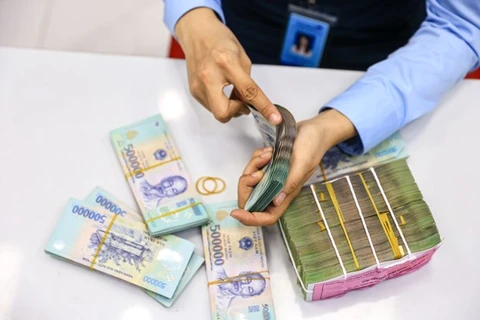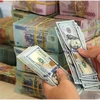 Demand for gold in Vietnam in the first quarter fell by 12% year-on-year to 17.2 tonnes. (Photo: VNA)
Demand for gold in Vietnam in the first quarter fell by 12% year-on-year to 17.2 tonnes. (Photo: VNA) Bullion and coin demand dropped by 10% to 12.6 tonnes, and jewellery demand by 18% to 4.6 tonnes.
Shaokai Fan, head of Asia-Pacific (ex-China) and global head of central banks at the World Gold Council, said: “The decline in jewellery gold demand is partly due to strong base effects – Q1 2022 was the strongest first quarter for local jewellery demand since 2007.
"Jewellery buying in Q1 2023 was healthy during the Lunar New Year celebrations before tailing off in February and March as the gold price rose.”
The report shows that while global gold demand, excluding over-the-counter, was 13% lower year-on-year, a recovery in the OTC market propped up demand to 1,174 tonnes, a 1% increase compared to Q1 2022.
Central banks helped boost demand adding 228 tonnes to global reserves, a Q1 record high in this data series.
Sustained and significant purchases by the official sector underscore gold’s role in international reserve portfolios during times of market volatility and heightened risk, the report said.
Jewellery was relatively flat in the first quarter at 478 tonnes globally.
Chinese demand regained ground, reaching 198 tonnes in its first quarter of unfettered consumer activity since lockdown restrictions were lifted.
This offset weaker demand in India, where it fell by 17% year-on-year to 78 tonnes. A sharp increase in domestic prices impacted the demand.
Investment demand was chequered. Renewed gold-backed exchange-traded funds inflows in March, driven primarily by systemic risk in the US economy, partially countered outflows in January and February and helped bring quarterly outflows down to a modest 29 tonnes.
On the other hand, global bar and coin investment strengthened by 5% to 302 tonnes, though there were notable shifts in key markets.
On the supply side, there was a slight increase to 1,174 tonnes, with a 2% rise in mine production and 5% rise in recycling driven by the higher prices./.
VNA
























